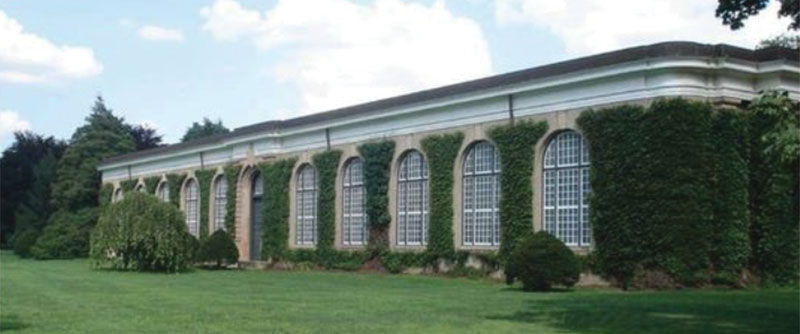FXCollaborative retrofits Tarrytown property for Rockefeller Bros. Fund

Tarrytown, NY FXCollaborative has been commissioned by the Rockefeller Brothers Fund (RBF) to adapt an orangerie on the family’s former estate in Westchester for reuse as a public arts center with net-zero carbon emissions.
The firm started planning and strategic design work in 2015 to transform the dormant building—the Orangerie, built in 1908 by architect Williams Welles Bosworth as a winter greenhouse for orange trees—into an creative venue to be named the David Rockefeller Creative Arts Center. It will include multipurpose performance spaces, a gallery, and a flexible studio for artists and community programs.
“The reinvention of the historic Orangerie is a thrilling assignment,” said FXCollaborative’s Sylvia Smith, a senior partner at the firm and head of its Cultural/Educational Studio practice. “Our approach will elegantly fuse arts-driven and net-zero energy design,” she said. “The result will be a laboratory for creative production and a model for sustainable transformation.”
An array of on-site solar panels will generate more energy than the 13,000 s/f, single-story structure will consume in a year (thus the net-zero building designation) and a rain garden will control storm water and restore natural habitat.
The firm will seek LEED Platinum certification for the Orangerie. Established by the US Green Building Council, this building-performance rating evaluates the efficient use of water, HVAC systems, energy, sustainable materials, and indoor environmental quality.
Construction is set to begin later this year and completion is slated for spring 2021.
“The net-zero energy David Rockefeller Creative Arts Center aligns with and advances RBF’s decades-long commitment to promote sustainable design,” Smith said. FXCollaborative has previously worked with RBF on other projects, including its headquarters in Manhattan.
The Rockefeller estate was home to four generations of the family beginning with John Rockefeller, the founder of Standard Oil. It features numerous residences accented by terraces, gardens, and outdoor sculpture.
After World War II, the Orangerie was primarily used as a storage facility. The building was transferred to the ownership of the National Trust for Historic Preservation in 1979. Together with the historic Rockefeller home, the Marcel Breuer House, the Coach Barn, the Playhouse, and the encircling gardens and landscape, it is now operated by the RBF as The Pocantico Center, a conference center, museum, summer performance venue, and artist residency.
Named for Rockefeller’s grandson David who was a businessman, philanthropist, and avid art collector, the arts center will allow the facility to offer cultural programming year-round, said Judy Clark, executive director of The Pocantico Center.
“The repurposed building will give us space to elevate and nurture the creative process for both emerging and world-class artists, and local community groups alike,” Clark said of the Orangerie’s new role at Pocantico.
“The goal of this project is to see artists and their work as a dynamic work in progress, instead of a static, finished project,” said FXCollaborative’s Smith. “We know Mr. Rockefeller believed art changes the way one perceives the world, and we’re excited to play an important part in facilitating that change in New York.”
AmTrustRE completes $211m acquisition of 260 Madison Ave.


AI comes to public relations, but be cautious, experts say - by Harry Zlokower

Strategic pause - by Shallini Mehra and Chirag Doshi

Behind the post: Why reels, stories, and shorts work for CRE (and how to use them) - by Kimberly Zar Bloorian









.jpg)
.gif)
.gif)